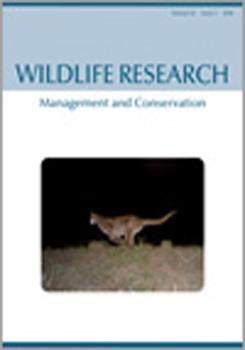Context. By the early 1900s, river otters (Lontra canadensis) were extirpated across large parts of their range in North America. Over the last several decades they have made a remarkable recovery through widespread reintroduction programs. River otters were reintroduced in Ohio, USA, between 1988 and 1993, and restricted and limited harvesting of this population began in 2005. While circumstantial evidence points to rapid population growth following the reintroduction, changes in population size over time is unknown.
Aims. We sought to model river otter population growth following reintroduction, and to assess the impact of harvesting.
Methods. We used empirical and literature-based data on river otter demographics in Ohio to estimate abundance from 1988–2008 using an age- and sex-specific stochastic Leslie matrix model. Additionally, we used statistical population reconstruction (SPR) methods to estimate population abundance of river otters in Ohio from 2006 to 2008.
Results. Our Leslie matrix model predicted a population size of 4115 (s.d. = 1169) in 2005, with a population growth rate (λ) of 1.28 in 2005. Using SPR methods we found that both trapper effort and initial population abundance influenced our population estimates from 2006 to 2008. If we assumed that river otter pelt price was an accurate index of trapper effort, and if the initial population was between 2000 and 4000, then we estimated the λ to be 1.27–1.31 in 2008 and the exponential rate to be 0.17–0.21 from 2006 to 2008. Conversely, if the river otter population in 2005 was 1000, then we estimated λ to be 1.20 in 2008 and the exponential rate to be 0.08 from 2006 to 2008.
Conclusions. The river otter population in Ohio appears to have had the potential to grow rapidly following reintroduction. The ultimate effect of the harvesting regime on population abundance, however, remains clouded by limited data availability and high variability.
Implications. The considerable uncertainty surrounding population estimates of river otters in Ohio under the harvesting regime was largely driven by lack of additional data. This uncertainty clouds our understanding of the status of river otters in Ohio, but a more robust, long-term monitoring effort would provide the data necessary to more precisely monitor the population.






